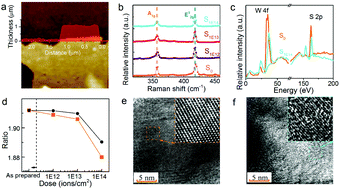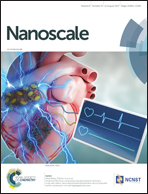Tailoring the optical properties of atomically-thin WS2via ion irradiation†
Abstract
Two-dimensional transition metal dichalcogenides (TMDCs) exhibit excellent optoelectronic properties. However, the large band gaps in many semiconducting TMDCs make optical absorption in the near-infrared (NIR) wavelength regime impossible, which prevents applications of these materials in optical communications. In this work, we demonstrate that Ar+ ion irradiation is a powerful post-synthesis technique to tailor the optical properties of the semiconducting tungsten disulfide (WS2) by creating S-vacancies and thus controlling material stoichiometry. First-principles calculations reveal that the S-vacancies give rise to deep states in the band gap, which determine the NIR optical absorption of the WS2 monolayer. As the density of the S-vacancies increases, the enhanced NIR linear and saturable absorption of WS2 is observed, which is explained by the results of first-principles calculations. We further demonstrate that by using the irradiated WS2 as a saturable absorber in a waveguide system, the passively Q-switched laser operations can be optimized, thus opening new avenues for tailoring the optical response of TMDCs by defect-engineering through ion irradiation.



 Please wait while we load your content...
Please wait while we load your content...